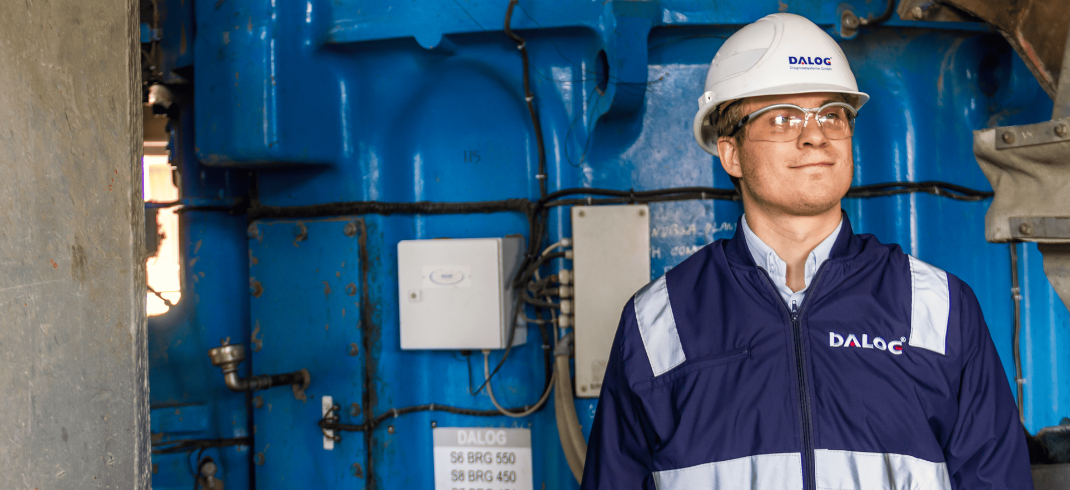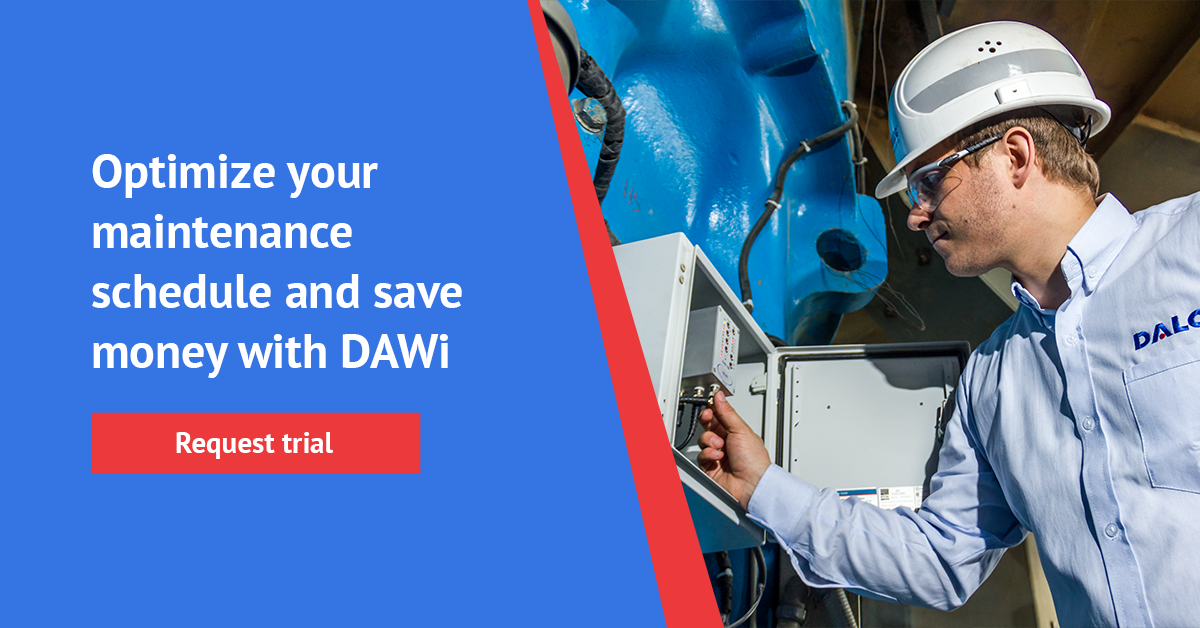The Benefits of Predictive Maintenance for Equipment Health and Uptime
Predictive maintenance is a strategy that uses data analytics and machine learning to predict when equipment is likely to fail. It enables companies to take proactive measures to prevent downtime, reduce maintenance costs, and improve equipment reliability and uptime by detecting potential issues before they happen.
Keep reading to learn how predictive maintenance can benefit your organization.
- What is predictive maintenance?
- The benefits of predictive maintenance
- How to implement a predictive maintenance program
- Challenges and limitations of predictive maintenance
What Is Predictive Maintenance?
Predictive maintenance is a maintenance strategy that uses advanced technologies and data analytics to predict equipment failure before it occurs. It differs from other maintenance strategies, such as reactive maintenance, which involves addressing an issue after it already happened, and preventive maintenance, which is typically based on a fixed schedule.
Predictive maintenance utilizes sensors, data analytics, and machine learning to continuously monitor and analyze real-time equipment performance data. This data is used to identify patterns, anomalies, and trends that could indicate potential equipment failures. Predictive maintenance also allows for optimizing maintenance activities, as maintenance is performed only when deemed necessary, which leads to reduced downtime and lower maintenance costs.
Overall, predictive maintenance is a proactive approach to maintenance that helps organizations stay ahead of equipment failures. By utilizing advanced technologies and data analytics, companies can make informed decisions about maintenance activities and ensure equipment is maintained at peak performance.
The Benefits of Predictive Maintenance
Predictive maintenance offers a wide array range of benefits, such as:
Improved equipment reliability and uptime: By identifying potential equipment failures before they occur, predictive maintenance enables companies to take proactive measures for preventing downtime. For example, if a sensor detects an anomaly in equipment performance, maintenance teams can investigate and repair the issue before it causes a breakdown. This approach minimizes disruptions to operations and ensures that equipment is available when needed.
Reduced maintenance costs and downtime: Predictive maintenance helps organizations optimize their activities by performing maintenance only when necessary. This approach reduces maintenance costs and minimizes downtime, as maintenance is performed based on actual equipment performance data rather than a fixed schedule. For example, suppose a sensor detects that equipment operates within normal parameters. In that case, maintenance teams can avoid performing unnecessary maintenance activities that would otherwise increase costs and downtime.
Increased safety for workers and equipment: Predictive maintenance can help improve safety in the workplace by identifying potential hazards before they occur. For example, a sensor may detect that the equipment is operating outside standard parameters. In that case, maintenance teams can investigate and repair the issue before it becomes a safety hazard. This approach helps to reduce the risk of accidents, injuries, and equipment damage.
Enhanced asset management and planning: Predictive maintenance allows organizations to optimize their asset management and planning activities by providing real-time data on equipment performance. This data can identify trends and patterns that could indicate equipment failures, and enable companies to plan and budget for maintenance activities more effectively. For example, if a piece of equipment shows signs of wear and tear, organizations can plan to replace it before it fails, minimizing the risk of downtime and disruption to operations.
Learn more about how to choose the most cost-effective solution for predictive maintenance from our free eBook The Reliability Manager’s Plan
How to Implement a Predictive Maintenance Program
Implementing a predictive maintenance program can be a complex process that involves identifying critical equipment and failure modes, collecting and analyzing data, setting up a maintenance schedule, and establishing performance metrics and KPIs.
Here are some practical steps that organizations can take to implement a predictive maintenance program:
Identifying critical equipment and failure modes: The first step in implementing a predictive maintenance program is to identify the equipment vital to operations and the failure modes that could lead to downtime or safety hazards. This information can be gathered through equipment reliability analysis, historical maintenance data, and input from maintenance and operations teams.
Collecting and analyzing data: Once the critical equipment and failure modes have been identified, the next step is to collect and analyze data on equipment performance. This data can be collected through various sources, including sensors, SCADA systems, and maintenance logs. The data should be analyzed using advanced analytics tools like machine learning algorithms to identify patterns and anomalies that could indicate potential equipment failures.
Setting up a maintenance schedule: Based on the data analysis, maintenance teams can set up a maintenance schedule that is tailored to the specific needs of each piece of equipment. The program should address potential issues before they become critical while minimizing downtime and costs.
Establishing performance metrics and KPIs: To track the effectiveness of the predictive maintenance program, organizations should develop performance metrics and KPIs that align with their overall maintenance and operational goals. These metrics could include equipment availability, mean time between failures (MTBF), and maintenance costs.
Collaboration and communication between maintenance, operations, and IT teams: Finally, it is crucial to establish a culture of collaboration and communication between maintenance, operations, and IT teams. This involves breaking down silos and ensuring everyone can access the data and insights needed to make informed decisions. It also involves providing training and support to ensure that teams have the skills and knowledge to implement and maintain the predictive maintenance program.
By taking these steps, organizations can optimize maintenance activities and ensure equipment is maintained at peak performance.
Learn more about How To Get Started with a Predictive Maintenance Program
Challenges and Limitations of Predictive Maintenance
While predictive maintenance can provide many benefits, there are also challenges and limitations that companies need to consider, such as:
Data quality and availability: One of the main challenges of predictive maintenance is ensuring that the data used for analysis is accurate, reliable, and timely. This requires organizations to invest in sensors, data collection systems, and data management tools that can ensure high-quality data.
Integration with legacy systems: Another challenge of predictive maintenance is integrating it with legacy systems that may not be compatible with modern analytics tools. This requires organizations to invest in new technologies and integrate them with existing systems to ensure a seamless data flow.
Cost and resource constraints: Implementing a predictive maintenance program can be expensive and resource-intensive, particularly for organizations starting from scratch. This requires organizations to carefully assess their budget and resource constraints and develop a plan that balances the costs and benefits of predictive maintenance.
To address these challenges and overcome the limitations of predictive maintenance, organizations can take the following steps:
Invest in data quality and availability: To ensure that the data used for predictive maintenance is accurate and reliable, organizations should invest in sensors and data collection systems to provide high-quality data. They should also establish data management protocols and workflows to ensure data is available on time.
Adopt a phased approach to integration: To address integration challenges, organizations can adopt a phased approach to integrating legacy systems with modern analytics tools. This could involve identifying the critical systems that need to be integrated and then developing a plan to minimize disruption and ensure a seamless data flow.
Start small and scale up: To address cost and resource constraints, organizations can start with a small pilot program and then gradually scale up as they demonstrate the benefits of predictive maintenance. This can minimize costs and risks while providing valuable insights into equipment health and performance.
Learn more about Overcoming Common Challenges in Implementing Predictive Maintenance Programs
Predictive maintenance is a proactive maintenance strategy that uses data analytics and machine learning to identify equipment issues before they occur. Predictive maintenance can help organizations improve equipment reliability and uptime, reduce maintenance costs and downtime, increase safety for workers and equipment, and enhance asset management and planning by providing real-time insights into equipment health and performance.
Organizations should identify critical equipment and failure modes to implement a predictive maintenance program, collect and analyze data, set up a maintenance schedule, and establish performance metrics and KPIs. Collaboration and communication between maintenance, operations, and IT teams are also crucial for the success of a predictive maintenance program.
In conclusion, predictive maintenance is a powerful tool that can help organizations improve equipment reliability and uptime, reduce maintenance costs and downtime, increase safety for workers and equipment, and enhance asset management and planning. By implementing a predictive maintenance program, organizations can stay ahead of equipment issues and ensure their operations run smoothly and efficiently.
Stop guessing and start analyzing with DAWi, our wireless vibration sensor!









